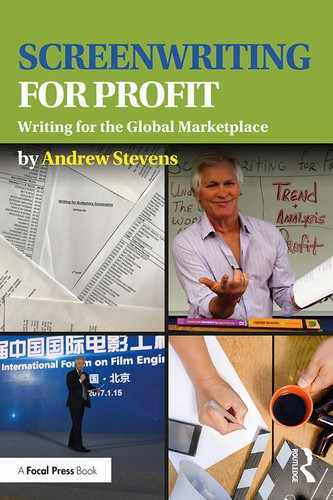Book Description
This book teaches readers how global trends define the marketplace for saleable screenplays in key international territories as well as the domestic market. Veteran writer, producer, and director Andrew Stevens gives you the insider edge you need to write for the global marketplace, sharing his decades of experience producing and financing everything from micro-budget independent films to major studio releases. In leveraging Stevens’ comprehensive experience, you will learn how to determine specific subject matter, genre, and story elements to make the most of international sales trends, and harness the power of these insider strategies to craft a screenplay that is poised to sell.
